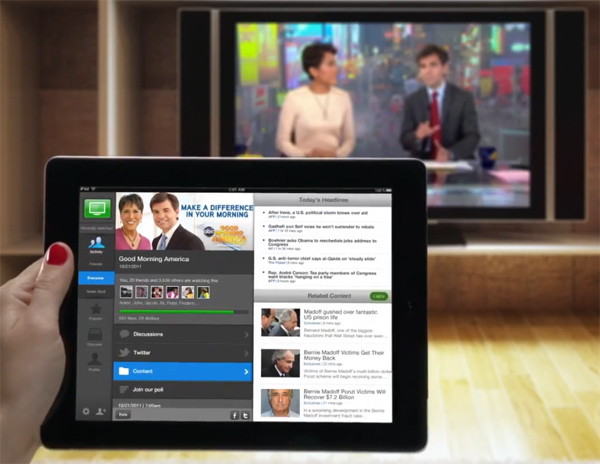Designing second screen to facilitate immersive user experiences is what most brands resort to today. The opportunities are countless and the chances for a brand to increase its interaction with customers bigger than ever. Especially since there’s a load of activities that users engage with while watching television. From surfing the web and online shopping to emailing and checking scores, viewers do just about anything.
A personalized customer experience is the first golden rule for an enhanced user experience. This is what customers expect from brands and companies. To deliver personalized content, brands need to come up with efficient content strategies. Two such strategies are contextual content and expanded content.

Photo source: Adweek
Contextualizing content assumes developing a content strategy around customer needs and wants that is also in accordance with a company or brand’s objectives. This frame of work is adopted from the content creation stage all through content delivery and measurement. When employed strategically, contextualized content can drive brand retention and influence customer behavior in a positive manner.
To tailor to an audience’s needs you need to define your audience and then define your content. Is your product serving a specific age group? Is your audience formed by young adults? If so, you might want to create content that is shared easily given that the young are such a social generation. Are you looking to raise awareness on a specific topic or maybe promote a new product? Consider that video content is easier for people to remember and access than text and thus more likely for them to engage with it.
It’s also important that you define your content based on the nature of its characteristics, if it’s more or less interactive. Consider that, for some purposes, more informative but succinct content is better while for others interactive content is.
How you correlate visual and graphic elements with copy text can be much more relevant to a user than you think. The idea with contextual content strategy is that human brains respond to certain stimuli in certain ways. You stimulate a user with the type of content you deliver.
Content that you expand from first screen to second screen, otherwise known as expanded content, is just as important. Expanded content is usually a unique content that brands deliver on second screen, content that is not available on first screen, but there is a bridge that connects the dots. You don’t want expanded content to be the resized version of your television content. Remember, content has to be new to the user. To sum it up: